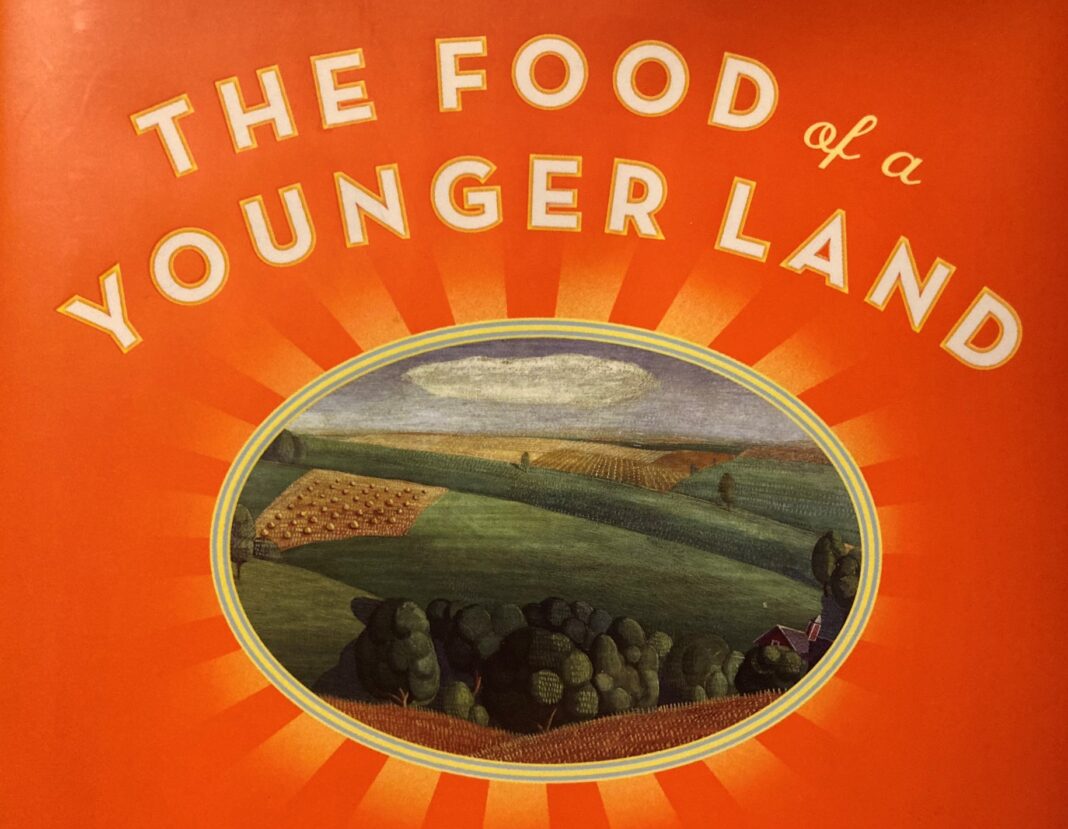It is an understatement to characterize the author Mark Kurlansky as “prolific,” and you’re invited to peruse Kurlansky’s web site and sift through his three dozen titles, the majority of which interest me, including last year’s The Importance of Not Being Ernest (Hemingway). I intend to acquire it soon. Kurlansky’s explorations of food are what hooked me a long time ago, specifically these four books:
- Cod: A Biography of the Fish That Changed the World (1997)
- The Basque History of the World (1999)
- Salt: A World History (2002)
- The Big Oyster: History on the Half Shell (2006)
As an aside, The Basque History of the World certainly is not dedicated to food in its entirety, but comestibles and their consumption figure prominently in the narrative.
In 2009 I purchased The Food of a Younger Land, for which Kurlansky functions as emcee and editor, introducing and collating the work of other writers.* But these were not just any ink-stained wretches, because their output had been produced seven decades before as part of the Depression-era Works Progress Administration, or WPA.
The WPA was charged with finding work for millions of unemployed Americans. It sought work in every imaginable field. For unemployed writers the WPA created the Federal Writers’ Project, which was charged with conceiving books, assigning them to huge, unwieldy teams of out-of-work and want- to-be writers around the country, and editing and publishing them.
The writer Katherine Kellock, a Federal Writers’ Project administrator, first commissioned a series of well-received state and regional travel guidebooks, then when this well began running dry, it occurred to her to assemble a book about American “food and eating traditions.” It was to be called America Eats.
Kellock’s idea never came to fruition. The nation’s post-Depression economic recovery hastened with the outbreak of World War II in Europe and Asia, lessening the need for make-work campaigns like the Federal Writers’ Project. America’s formal entry into WWII with the Japanese surprise attack on Pearl Harbor in 1941 redirected all vocational energies overnight as the “arsenal of democracy” went into full production.
However, much writing about food and eating traditions had been produced as intended. Unfortunately the documents became dispersed among dusty archives, sometimes lost, and at other points found. The bits and pieces capable of being reassembled decades later form the basis of The Food of a Younger Land, which takes us back to a place that truly no longer exists, even if it was inhabited by my own parents, who were born in 1925 (father) and 1932 (mother).
In 2009 at NPR, an excerpt from Kurlansky’s introduction to The Food of a Younger Land was reprinted. The web site is free, so I strongly encourage readers who are interested in how America was eating just before World War II, interstate highways and all the various other revolutions to follow made food what it is (and is not) today to visit NPR and be briefed.
Excerpt: ‘Food Of A Younger Land’
(Katherine Kellock) wanted the book to be enriched with local food disagreements, and it included New England arguments about the correct way to make clam chowder, southern debate on the right way to make a mint julep, and an absolute tirade against mashed potatoes from Oregon. It captured now nearly forgotten food traditions such as the southern New England May breakfast, foot washings in Alabama, Coca- Cola parties in Georgia, the chitterling strut in North Carolina, cooking for the threshers in Nebraska, a Choctaw funeral, and a Puget Sound Indian salmon feast. It also had old traditional recipes such as Rhode Island jonny cakes, New York City oyster stew, Georgia possum and taters, Kentucky wilted lettuce, Virginia Brunswick stew, Louisiana tête de veau, Florida conch, Minnesota lutefisk, Indiana persimmon pudding, Utah salmi of wild duck, and Arizona menudo. Ethnic food was covered, including black, Jewish, Italian, Bohemian, Basque, Chicano, Sioux, Chippewa, and Choctaw. Local oddities, such as the Automat in New York, squirrel Mulligan in Arkansas, Nebraska lamb fries or Oklahoma prairie oysters, and ten-pound Puget Sound clams, were featured. Social issues were remembered, as in the Maine chowder with only potatoes, the Washington State school lunch program, and the western Depression cake. There was also humor to such pieces, as the description of literary teas in New York, the poem “Nebraskans Eat the Weiners,” and the essay on trendy food in Los Angeles.
—
* The book was promptly shelved, and for the most part, I completely forgot about it. At some point it finally dawned on me that I hadn’t read it, which is a puzzling lapse given the extent to which history generally obsesses (and occasionally paralyzes) me.





















